Buy HD e-Books & Text —— www.ccelian.com
the Art of Nao
Scrolls: 1 . 2a . 2b . 3 . 4 . 5 . 6 . 7 . 8 . 9 . 10 . 11 . 12 . 13 . 14 . 15 . 16 . 17 .
18 . 19 . 20 . 21 . 22 . 23 . 24 . 25 . 26 . 27 . 28 . 29 . 30 . 31 . 32 . 33 . 34 .
< Scroll 3 ___________________________________________________ Scroll 5 >
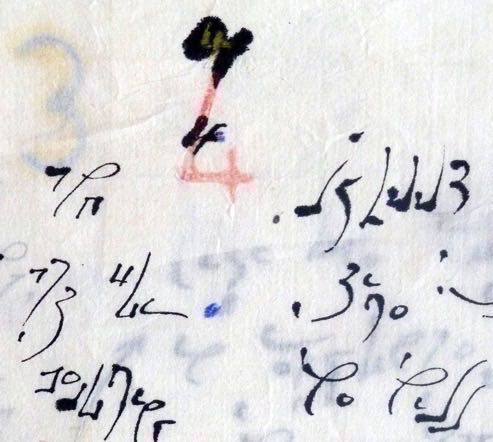
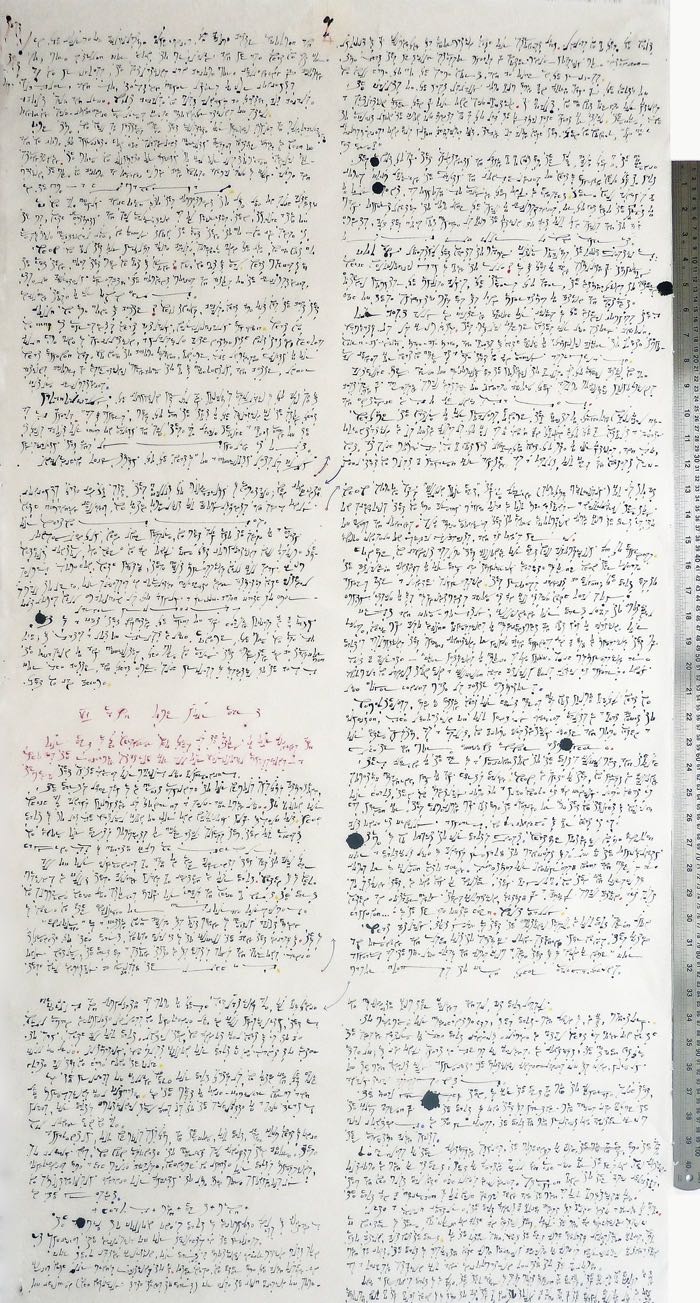
_______________Scroll 4 . 66 x 135 cm / 26 x 53 inches______________
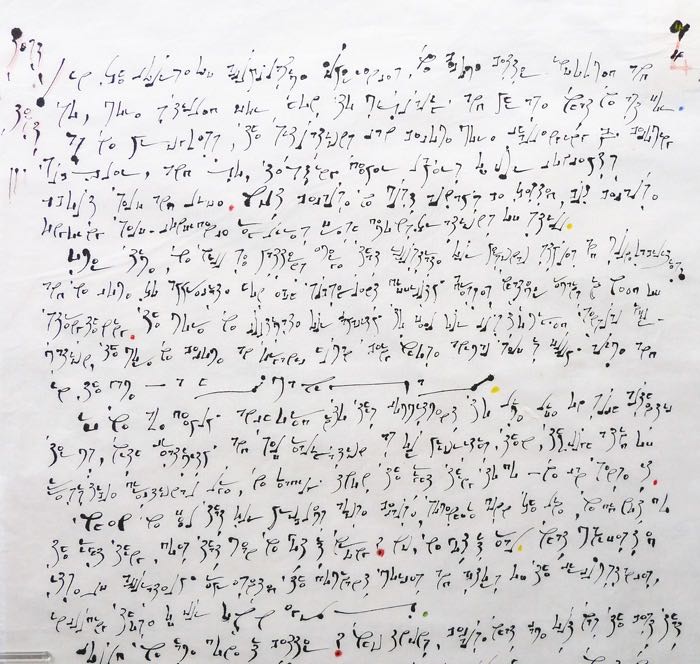
Scroll 4-section 1.1
In the course of accumulative experiences, we become better informed and more skilled for how to visualize and phrase what we ask for.
As we progress, the situations can become more challenging by becoming subtler and so, testing deeper layers of our concepts about self and life. Not because we must always be tested, but because ongoing self-confidence requires fresh demonstrations of skill.
Over time, we will see patterns emerge that illustrate our personal styles and vulnerabilities, and we come to appreciate how each subsequent difficulty addresses whatever remains in need of strengthening. The more we cultivate our capacity to feel our customized sensual information, the more we become an organic human being whose animal self is fully alive and in the game—a humanimal.
If we are deeply anchored into this commitment to live on such authentic terms, with creativity and self realization as our priorities, then, through a kind of irresistible directional urge, we readily know the right thing to do in most situations—we can “sense” it.
When we feel that our problems arose because, somewhere down the line, we did not do the right thing, does that mean we got it wrong? No, we got it real. What manifested itself accurately represented the dominant voices and actors of the circumstances, including those of our own egos.
___________________
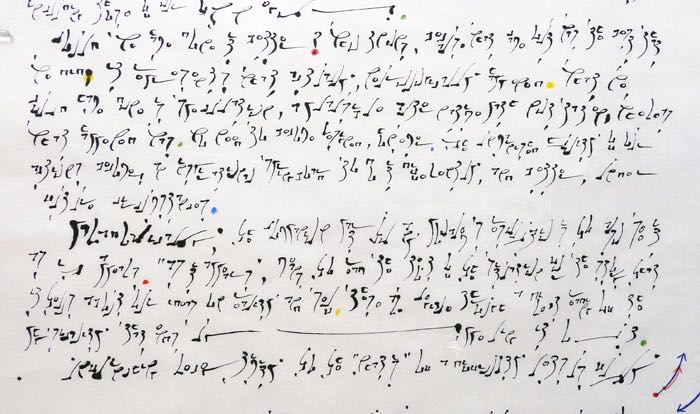
Scroll 4-section 1.2
Could we have done it better? Who knows, because what came out was the best that we did; it represents what actually, neurologically, happened. What we could have done is only speculation, a plausible alternative path not taken, whereas what happened was. No need to become resigned, however. The unvarnished quality of our actions becomes an inspirational springboard to do it differently, and better, under future circumstances.
Paradoxically, the companion part to any problem’s resolution is also to see it as it appears. “As it appears,” means to read the text of the situation for the story that it tells about our ideas on reality & self. These are legible through a direct reading of the physicality that ends up spelling it out.
Unflinching receptivity to the “what is” of a difficulty lets us fully >
_____________________
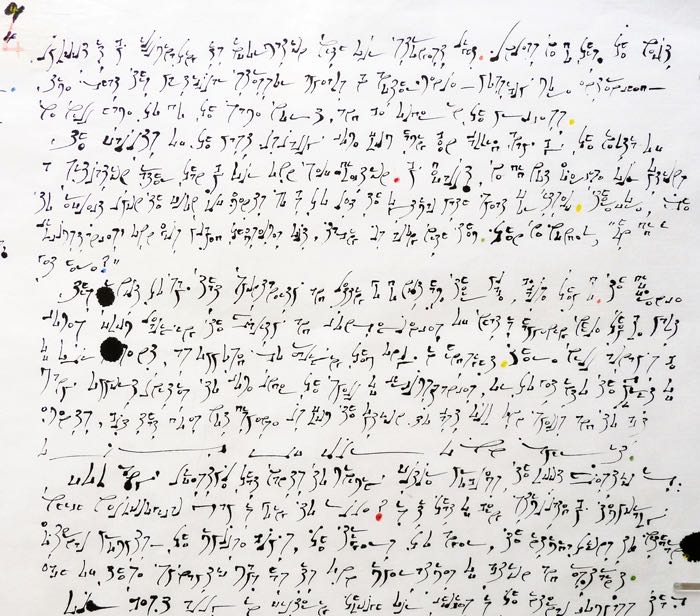
Scroll 4-section 2.1
> uproot it by illuminating its information with our strongest light. Unless we do this, the next time that this conceptual stressor appears in another venue—possibly more entrenched—we will have to do the same work, and be older in the process.
The faults of the past usually come from having been carried away by the inertia of a situation rather than by our own self-direction. By default, we did not exercise our options to reflect upon the flow of events so as to let the optimal path speak for itself. Therefore, the circumstances’ own egos played themselves out, taking us along with them. Then we wonder, “How did I get here?”
This is not to say that spontaneity and letting go do not have their place, because they do. The difference comes from realizing the quality and consequences of what is happening while they are part of our moment, as opposed to realizing them only in hindsight. There will always be many opportunities to come under the spell of circumstances or to get into the spirit of events, but that does not dispense us from the option to cast our own spells and to act out of our own spirit.
For any lifestyle that wants to minimize future problems, the root question is: which neurological map is going to rule? Is it that of being stimulated by temporary external prompts—the impulse buys, the triggers to anger, the intimidations to withdraw? Each of these synaptic maps has its own imperatives of action and restraint.
____________________
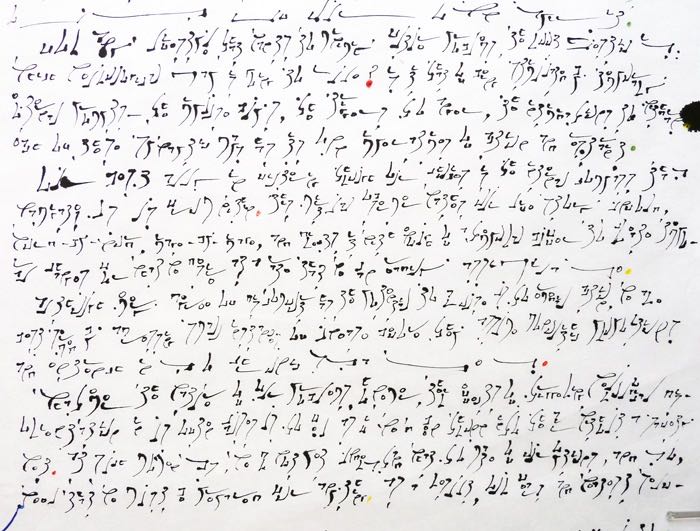
Scroll 4-section 2.2
Our best ally in filtering through our choices is the internal compass that navigates us from within. This virtual observer watches our life story unfold, word-by-word, image-by-image, and directs it with enough of a temporal buffer to create temporal changes for what we desire at a rate we can readily assimilate.
Although every degree of discomfort has the potential to arouse us to take remedial action, we are best served by addressing small instances of unease before they assume monolithic proportions and entrench into chronic states.
Whatever the nature of our problems, however, their effects of triggering neurological disorientation in us often causes us to feel as if we’d been thrown into the air without a safety net. At such moments, we do not yet understand what to make of our options and so, feel that we must be prepared for anything. As a result, our fears and weakest self- >
______________
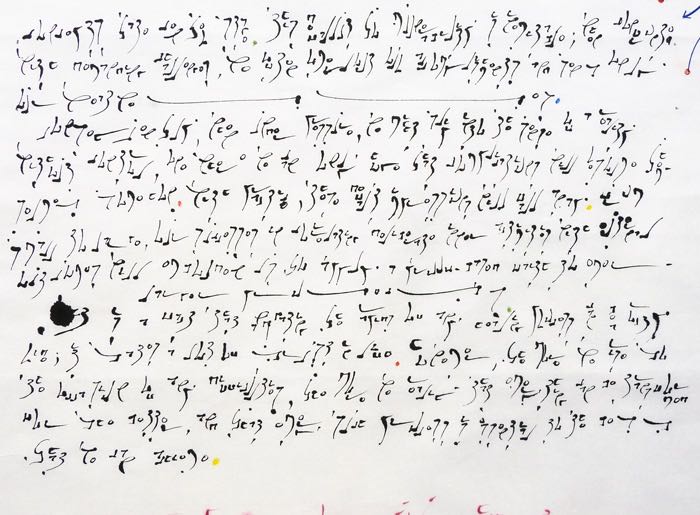
Scroll 4-section 3.1
> concepts take center stage. This default to vulnerability is inevitable; when confronted with demanding challenges, we often overlook our accomplishments and sense only our weaknesses.
Consequently, when under pressure, we might slip into the sense of a reality without control, one where we can only hope that complications will resolve themselves somehow. With practice, these default impressions will fall away. From small to large, our successes in correlating deliberate inner activities with external outcomes will embolden us to apply a proof-based faith to ever-larger projects.
It is a fact that navigating the rapids of any healing process can be a rocky ride; it takes a lot of trust in life. However, the more we rise to the occasion of any difficulties, the more we realize that everything can be transformed for the better, and that every such process is essential to the best that we can achieve.
_________________
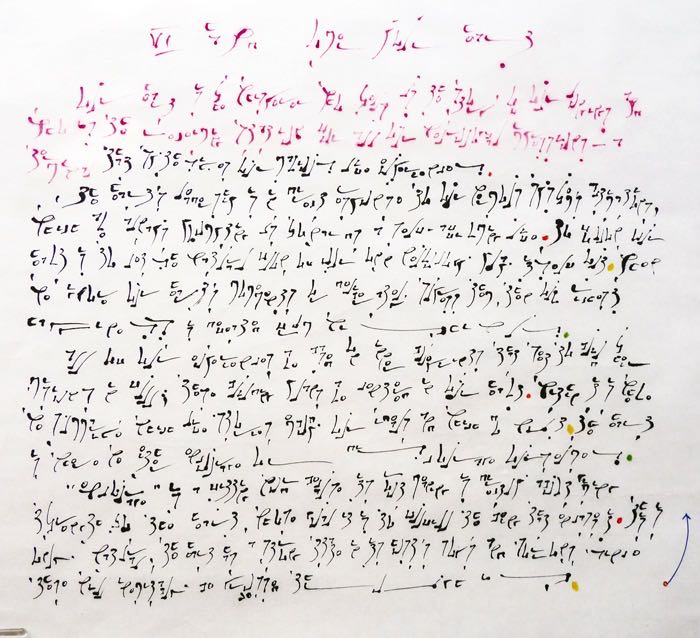
Scroll 4-section 3.2
6 Hand Over Your Heart
Our heart is the whisperer who tells us the story of our longings and who is the receiving station for all our neurological impressions—a terminal that synthesizes our various life experiences.
The heart’s leadership is in direct response to our nervous system’s activations, which are always prompting us towards a self-affirming life. To follow our heart is to let the natural flow of our own neurology play itself out. When we ignore our heart’s movements or deliberately suppress them, then our happiness is defeated from within us.
All our experiences are based on inner blueprints that always seek to build their visions in full; these building plans are centered in our heart. Within it is where we summarize which life stories embody our ideals and which do not. The heart is where we either encourage or discourage ourselves.
"Encourage" is a fitting word because it’s root meaning is directly about giving strength to the heart, whose goal it is to fulfill the being that encases it. This is only natural; the heart has a strong stake in its host’s joys and sorrows since these sensations will inevitably be processed through it.
______________________
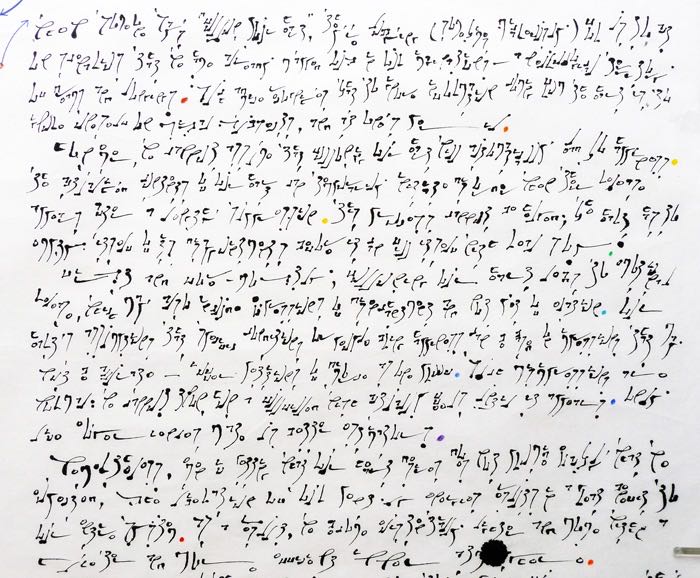
Scroll 4-section 4.1
When someone says: “follow your heart,” they're lobbying (sometimes, vicariously) for us to act on scenarios that we have mapped out in our imaginations—a neurological territory of dreams and longings. Such advice recognizes that to ignore information coming from the heart is to ignore oneself on vital subjects, and at one’s peril.
However, we cannot assume that following our heart will automatically lead to happiness. The actualized contents of our heart can temporarily initiate disorder when their release appears after a lengthy suppression. This process cannot be helped; the heart has to empty itself of its disappointments before it can fill itself with real joy.
First and fore-mostly, following our heart leads to emotional release, which may also include expressions of disenchantment and not yet of elation. Our heart's assumptions that specific conditions or people bring happiness can be based on impressions that may not be accurate—I offer petitions for divorce as one proof. Such mis-impressions are normal: we cannot know how a fulfilled wish actually feels until it appears. Only life experiences make us better estimators.
Nevertheless, even if getting what our heart desires does not provide exactly what we expected, the liberation of our pent up energies results in a great benefit to our entire system. As a result, we become existentially lighter and move within a quieter and more efficient inner atmosphere.
_____________________
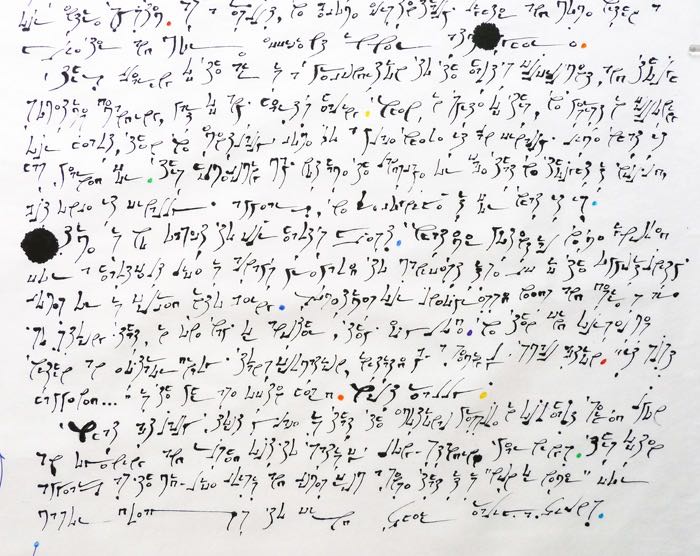
Scroll 4-section 4.2
This clearing of the air is a precondition to the heart’s fulfillment, and though sometimes demanding, part of any heart’s healing. When, in spite of this, we persist in following our heart then, we eventually come to a place where it can finally live what it has yearned for. This homecoming may not have the landscape or face that we thought it would, but once it finally appears, we recognize it for what it is.
Time is no object for our heart’s quest. Whatever potential we’ve ignored for a heartfelt life is always prepared to manifest itself if the opportunity comes or is forced into being. Sometimes our unexpressed needs and desires are so strong that, in one way or another, they explode. We then find ourselves within an extraordinary transformation, initiated by a seemingly small action. ”It just happened…” is the phrase often heard. Not really.
What actually took place is that the emotional pressure in our heart seized upon an opening and rushed in to gratify long-standing yearnings. This often appears as the mid-life crisis and comes from a sense that it is “now or never” for major dreams to find their realization.
___________________
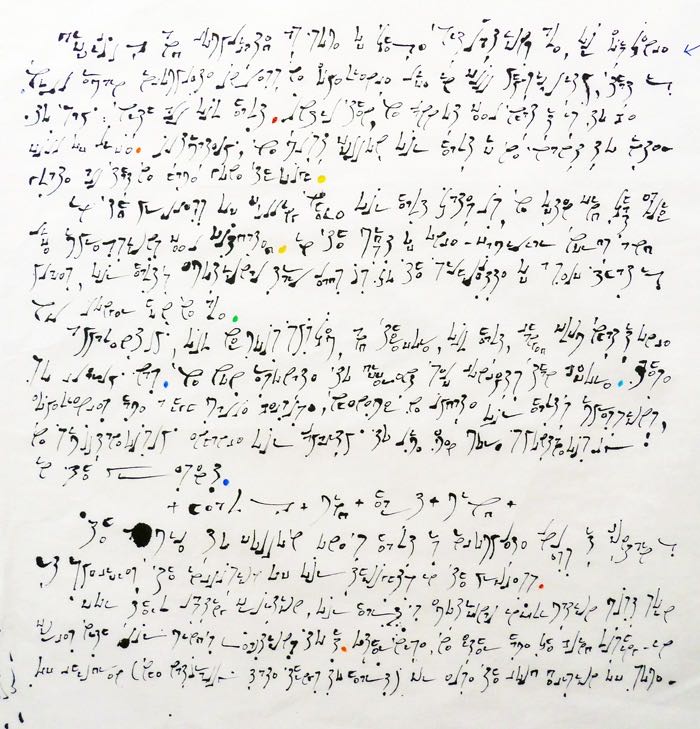
Scroll 4-section 5
Difficult and complicated as some of these situations are, our existence will remain incomplete unless we experience life in full physicality, that is to say: with all our heart. Until then, we cannot feel what it is to be full of life. Ultimately, we must follow our heart if we want to integrate all that we have gone through.
In the process of following where our heart takes us, we often find that earlier life impressions feel outdated. In the midst of once-familiar words and places, our heart’s emotional trail leads us to the silhouette of a self that is no longer how we are.
Apparently our nervous system, and therefore our heart, changed from what it once so clearly was. We now resonate to different self-concepts than before. These experiences have a high value because, whenever we update our heart’s impressions, we simultaneously enhance our capacity to live even more spontaneously in the present.
Heart + Mind + Heart + Mind +
The advice to follow one's heart is incomplete unless it specifies the inclusion of our thoughts in the process.
For their lasting fruition, our heart’s emotional information must join forces with our mind’s reactions to it. Otherwise, we either have the blind rushing-in of children (who naturally take things to heart), or the cold decision of some- >
___________________
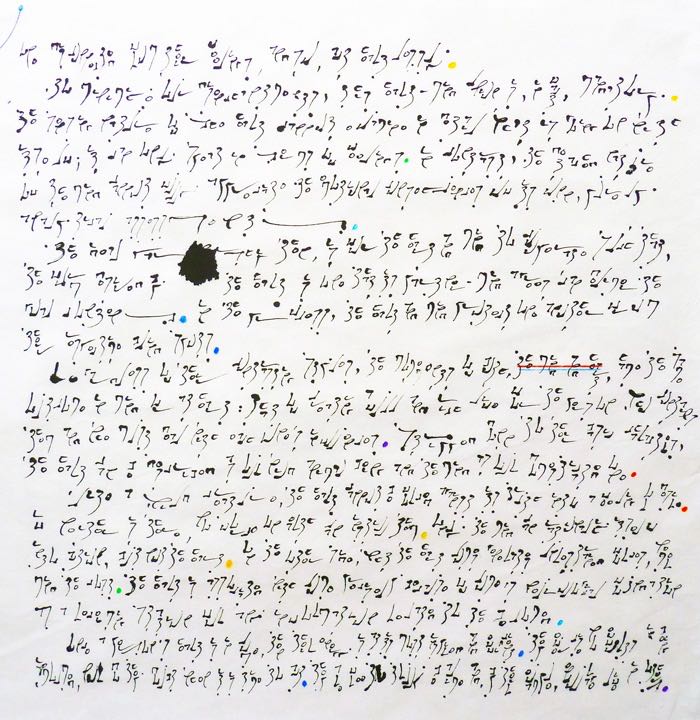
Scroll 4-section 6
> one disconnected from their feelings, and so, acts heartlessly.
To minimize our disenchantments, this heart-mind union is, in fact, mandatory. The sensing nature of the heart cannot examine in detail what is going on with itself; it can only speak in terms of feelings. In contrast, the detached nature of the thinking mind cannot fully appreciate the emotional consequences of its own, purely analytic, assessments.
The ideal partnership then, is for the heart & mind to cooperate such that, the form desired by the heart is one that its partner-mind agrees can deliver the goal content. In the process, the heart and mind protect one another from their respective blind spots.
Regardless of their contrasting styles, the actions of both have the same outcome in mind, or at heart: that of creating a full and rich life for the person who contains them and who must deal with each one’s influences. Stripped down to their basic characters, the heart can be described as our wild animal being and the mind as our domesticated one.
Like a wild creature, the heart cannot be forced against its truth into a feeling or desire. If neither is there, no force on earth can instill them. Only the mind can rationalize itself into action, but not the heart. On the other side, what the heart loves generates unrestrained forces, never mind the cost. The heart is associated with love precisely because of love’s neurological foundation as a receiving station for any information related to the beloved.
Once a person’s heart is in love, then their energy is at its most inspired and efficient. They exercise no efforts in being involved, nor do they doubt when it is time to act. They are free to truly be alive and, by their example, to encourage life in others.
< Scroll 3 ___________________________________________________ Scroll 5 >
Scrolls: 1 . 2a . 2b . 3 . 4 . 5 . 6 . 7 . 8 . 9 . 10 . 11 . 12 . 13 . 14 . 15 . 16 . 17 .
18 . 19 . 20 . 21 . 22 . 23 . 24 . 25 . 26 . 27 . 28 . 29 . 30 . 31 . 32 . 33 . 34 .
Buy HD e-Books & Text —— www.ccelian.com
© C.C. Elian 2010 - 2016